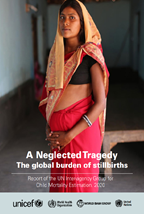Epidemiology, Monitoring and Evaluation
Our mission is to promote and facilitate the collection, analysis and strategic use of information on maternal, newborn, child, adolescent health and ageing to strengthen law/policy development and programme planning and implementation at country level; to generate evidence-based guidance and tools on measurement; and to coordinate global monitoring initiatives.
Monitoring across the life course with a specific focus on maternal, newborn, child and adolescent health and ageing (MNCAAH) consists of supporting child and adolescent health mortality and morbidity estimates and estimates of wellbeing of older persons, development of monitoring frameworks for specific interventions, harmonizing health indicators for global monitoring, producing global monitoring reports, and conducting in-depth analysis of MNCAAH health data.
We also cover cross-cutting monitoring issues across the life course including in the areas of routine health information systems, policies/laws and quality of care measurement.
The MNCAAH data portal includes visualization of health data across the life course with the ability to compare countries. The portal houses the Global Strategy for Women and Children monitoring data as well as the Sexual Reproductive Maternal Newborn Child and Adolescent Policy Survey data and data on COVID-19 across the life-course.
Technical areas of work
Quick links
News
All →Calls and opportunities





